Royal Adelaide Hospital Design Competition winning entries
By Bustler Editors|
Thursday, Jan 2, 2014
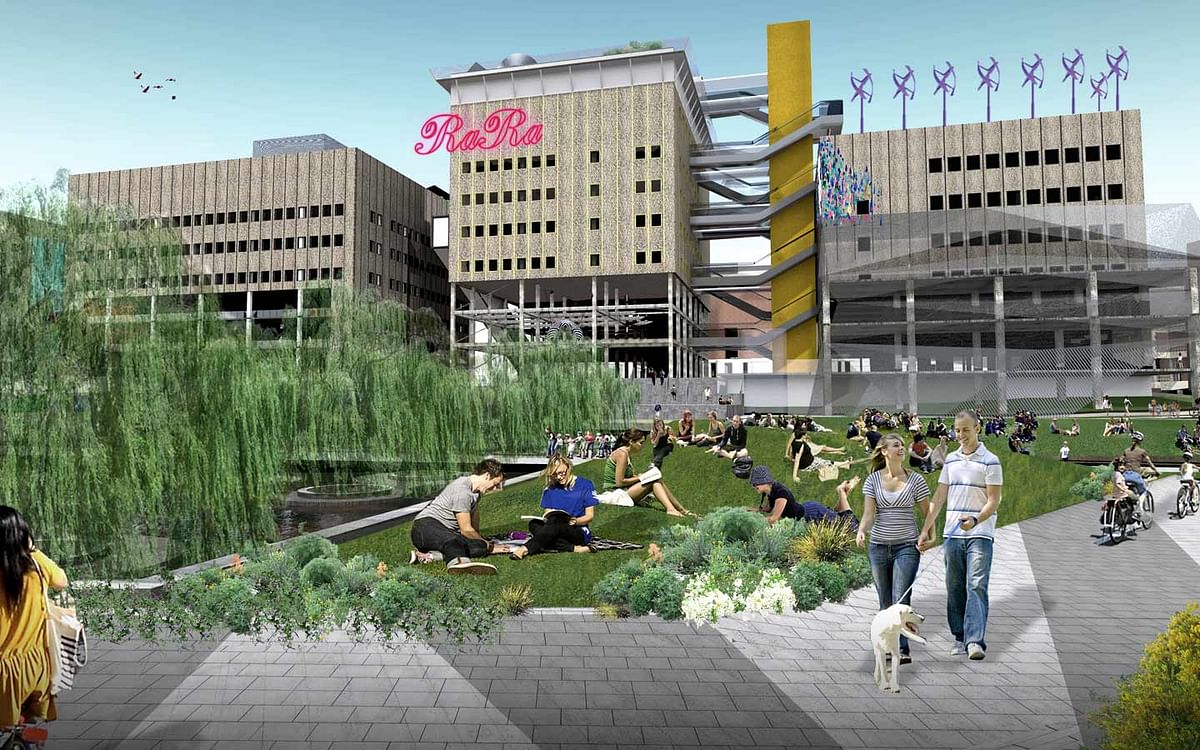
Related
South Australia's Office for Design and Architecture hosted the Royal Adelaide Hospital Design Competition in a process to redesign the historic Royal Adelaide Hospital site, which will be vacated by 2016.
Out of six finalists, the jury awarded one First Prize and a joint Second Prize. Thousands of public voters picked a People's Choice Award, and a Students Competition winner was also awarded:
- First prize: SLASH with Phillips/Pilkington Architects
- Second prize and People's Choice Award: Nice Architects with Mulloway Studios
- Second prize: Bonhag de Rosa with Taylor Cullity Lethlean
- Students competition winners: Nigel Reichenbach & Tom Hocking
The winners shared a total cash prize of $315,000. Renewal SA has begun development and feasiblity studies of the site. Designs from the competition will formulate the site's strategic framework and masterplan.
Check out the prize-winning submissions below.
First prize ($200,000) - SLASH, with Phillips/Pilkington Architects:

Project description
"Successful ecosystems rely on diversity. This proposal is diverse at all levels – the programmatic, architectural, cultural, economic and landscape. We seek to re-imagine the site without starting again, to build on its history as a place for medicine, healing and learning. Important memories are embedded within the existing fabric of the site, and these are used to inform new design insertions. The tradition, technics and tactics of medicine have helped inform these operations onto the existing buildings and landscape."
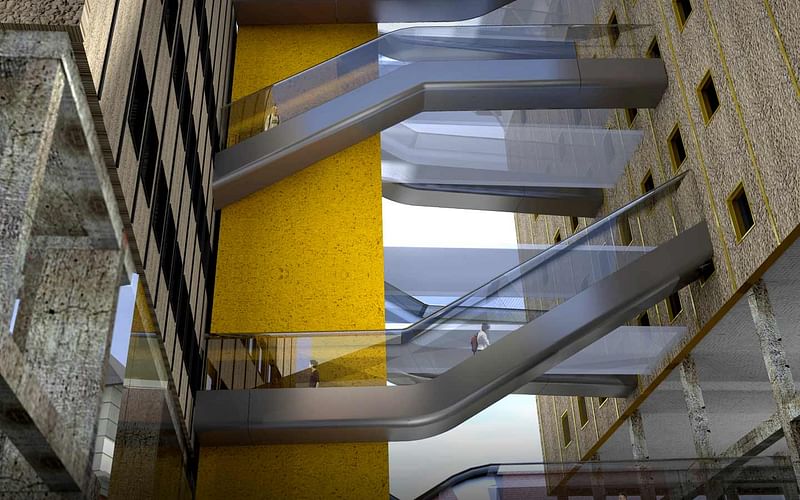
"From a sustainable viewpoint, there is no need for any new major building work on the site in order to house new programs. It is with this approach that we developed a staged strategy of design through removal, health through diversity and rehabilitation through community participation in the re-imaging of the site’s role to Adelaide and South Australia."
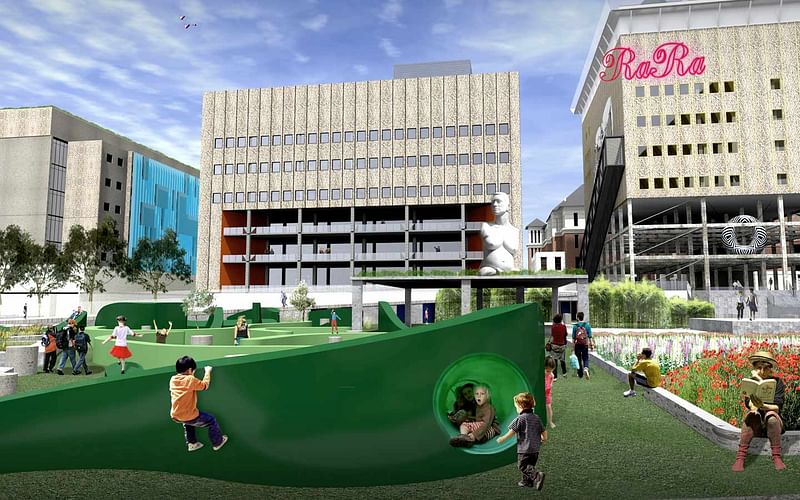
"The considered combination of public and key stakeholder feedback has been used to establish diversity of programs with a range of proposed funding schemes and economic benefits. The program mix brings day and evening vitality to the site, with visitors, workers and residents ranging across this new piece of the city with gardens at its heart. Detailed analysis of public and stakeholder feedback has made clear the need for both green public space and major attractors."
For full project text, click here.
Second prize ($50,000) and People’s Choice Award ($10,000) - NICE Architects with Mulloway Studios:
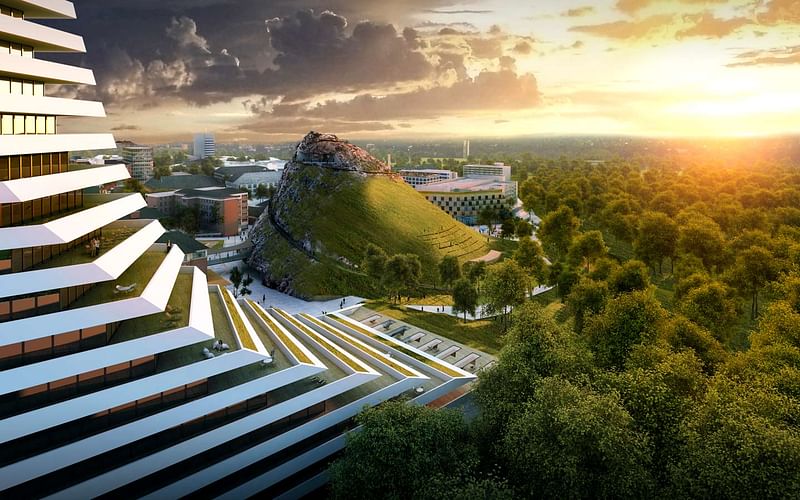
Project description
"ADELAIDE ROCKS is a new urban quarter. It is an engaging, unexpected, fun, active and multi-layered place built around sound ecological principles and economic sustainability. It will be a significant cultural and civic space that continues and consolidates the North Terrace Boulevard and Riverbank Precinct in Adelaide.

"Acknowledging its historical identity, the proposal retains many of the existing buildings along North Terrace and Frome Road, showcasing the built heritage of the site and providing new uses through adaptation [...] These cultural uses are counterbalanced with university uses and residential accommodation, providing a well-balanced mix of programmes that aims to provide all-day activation to the site."

"The core of the proposal is a massive urban gesture – a hill formed from the debris of demolished buildings that turns waste into a positive, exciting, and unique urban space. The hill provides a strong identity for the place, for the city and the State, and together with a series of embedded functions, creates a unique urban space that is quirky and engaging. A green and vertical landscape that connects the city to the parklands, the hill provides active and passive recreational opportunities not readily available within Adelaide’s CBD. The hill also provides a series of ecological opportunities that are unique."

"The vibrancy of public spaces and hill-park are at the core of the proposal. This vibrancy is underpinned by a unique, unexpected and apparently whimsical hill-scape. It signifies the site and becomes a strong reflection of how creative thinking can turn a mundane demolition problem into a positive and unique outcome, contributing to the identity of a creative City and State."
For full project text, click here.
Second prize ($50,000) - Bonhag de Rosa with Taylor Cullity Lethlean:

Project description:
"ORAH, the urban place to be. Social engagement in an urban environment demands a porous arrangement in terms of both function and architecture. Porosity and the resulting connectivity is therefore regarded as the primary tools in generating liveliness and social participation on the ORAH Site."

"By carefully opening up the Site step by step, as is proposed in the staging concept, the Site will remain over a given time-frame, in a state of ‘incompleteness’. The notion that the Site, with its built forms, can be moulded or adapted at any stage during the redevelopment time-frame, will become a driving factor in stimulating creativity and encouraging participation amongst the community in the Site’s renewal process. Together with the memories associated with existing buildings, the outcome of this creativity process will lead to new personal and shared identification with the ORAH Forum."
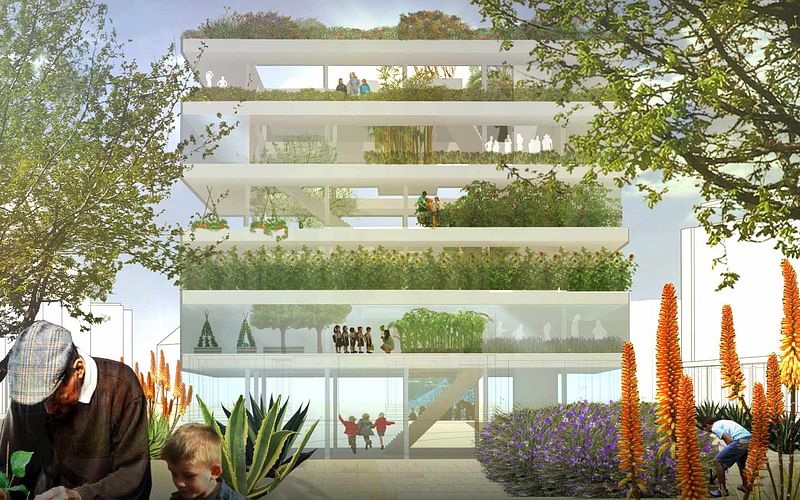
"As a sustainable demonstration project within the urban context, ORAH aims to create a harmony between environmental, economic and social needs. The Site will showcase ecological features based on all 4 elements, earth, water, sun and wind, and provide with the new ECO Blocks the necessary platform for collaboration on sustainability issues.
Above all, the ORAH Forum offers natures treasures and eco-experiences for everyone with its hands on program centred around the Intercultural Vertical Garden and the Edible Ornament."
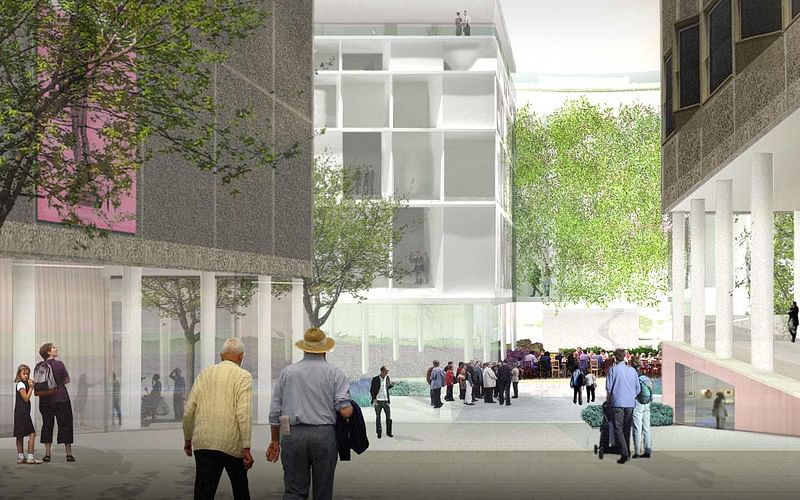
"A high level of initiative and an intense curiosity, which are both enhanced via collaborative engagement, is required in order to take full advantage of the proposed open structure. Initiative and curiosity is to be stimulated by making knowledge and resources available.
Furthermore, a mixed-usage program based on collaboration amongst individuals and/or groups will ultimately foster - together with the architecture - a community culture based on sharing. By encouraging stakeholders on Site to collaborate and work with others as a collective will support the community as a whole."
For full project text, click here.
All images and videos via Royal Adelaide Hospital Design Competition.

Share
0 Comments
Comment as :